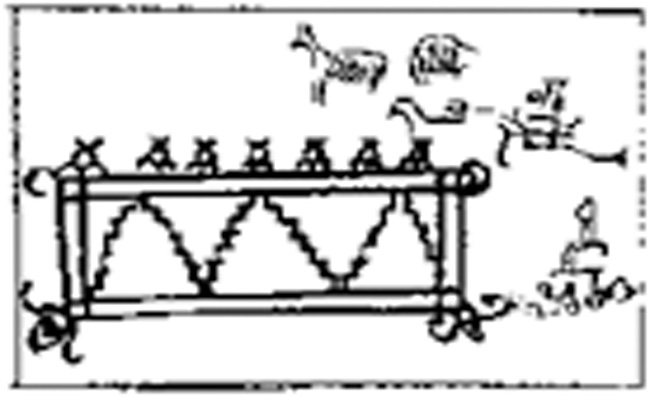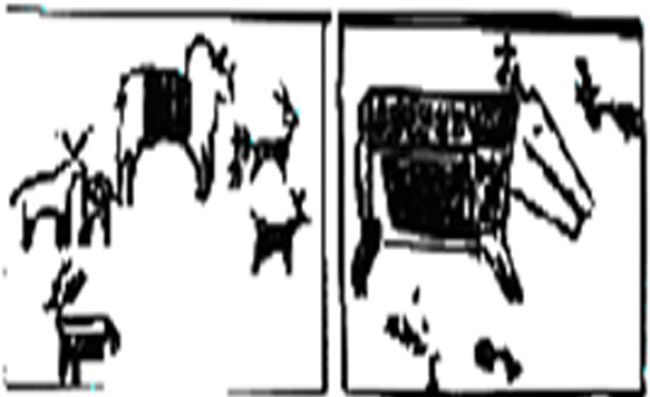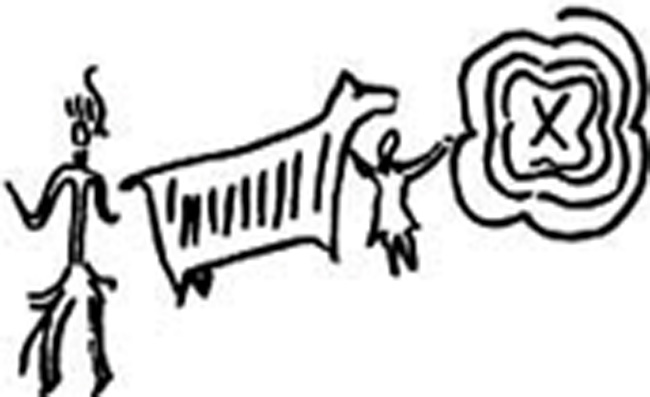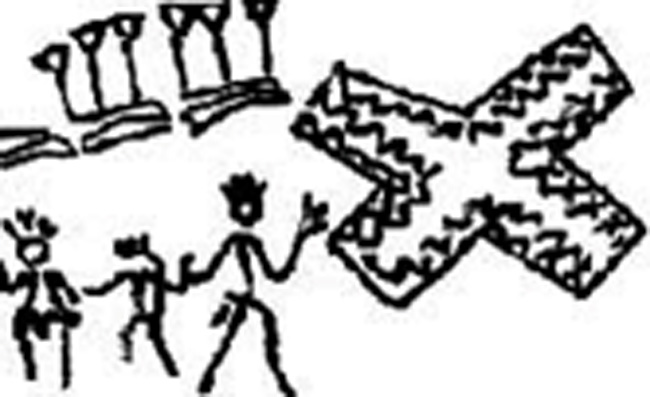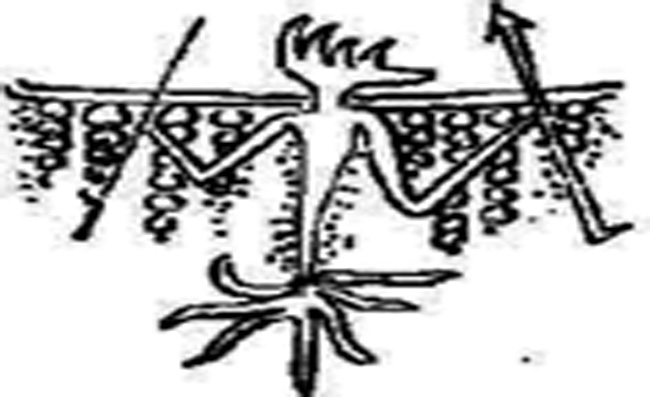Introduction
Folk art in villages of India has existed since time immemorial. This art was executed in a wide range of styles with multiple themes in a symphony of colours. It is enriched with a variety of dresses and ornaments, local variations of myths and even Hindu religion and local deities.
Vedas are the source of all arts in India. Vedic concepts found a place in folk art through the use of Vedic symbols. When natural powers were deified and given human form in Hindu religion the whole essence of Vedic philosophy got shape in it. The essence of religion has been beautifully brought out through folk art of India. And folk art has become a medium through which lessons on life are brought out in a simple manner. Numerous situations a person faces in life, both happy ones and otherwise. Then the lives of gods become a source of encouragement and peace to the people. Those are taken as examples and absorbed in our life. They contain solutions to human problems, focus on the necessity of patience, love and affection, need to be grateful to God for all that He has given us and so on. That is why Hindu religion is said to be a way of life. This exhibition is a mixed collection of such symbols and motifs in folk art. The deep philosophy of ancient scriptures had to reach the simple villager and remain perpetuated there. Therefore, our elders prescribed rituals, composed motifs and symbols, and wrapped them up in mythology. This gave it permanency. Its repetitive nature and in some extent isolation, are mainly responsible for the continuity of a particular style till today.
Rock Paintings
Indian rock paintings are symbolic representation of the primitive way of life. Certain symbols have their origin in these proto historic paintings. Nature has played a vital role in the development of various religious beliefs and rituals. In the early stages man believed in the cosmic forces such as sun, moon , thunder, rain, fire and water. These energies were gradually symbolised. Most of these symbols are portrayed in rock paintings.
Tribal art
The tribal art seems to have their roots in their rock shelters ancestors. Art of drawing invented by primitive man who by chance discovered the art of drawing by making images on sand. Once discovered the tradition of creativeness continued through generation of artists. Folk art’s origin goes back to the art of survival of Indian tribal societies and art of agricultural communities. The tribal had lived many centuries before the first urban civilization flourished on the bank of river Indus in 3rd millennium BC.
Among the tribal people of India Gond, Santhal and Bhils are the most numerous groups. They were in India since time immemorial. Tribal do not always line as isolate group, they have intermingled with other communities and imbibed many customs from others. The tribal art has been manifested in four ways:
1) Through Wall Decoration
- Decorative
- Ritualistic
2) Through Alpana Designs
3) Through Door Decoration
4) Through Scroll Paintings
Warli Paintings

Warlis are a farming community of Maharashtra. Warli paintings are made on the mud walls of their homes with ground rice flour. They are white on the background of red mud. Paintings are simple and depict different aspect of warli life with anaugular representations of human and animals and flora and fauna. Marriage chauk and warli dance are the most favourite subjects of warli paintings.
Tribal Art - Santal Pargana (Jadupatua )
Jadupata are members of a small community in Santal Pargana. The Santal’s held jadupatas in awe because they came to be known not merely as patuas (painters) but jadupata (magic painters). Painters are envariably men. They use limited colours and materials in their paintings. They have a common style of painting which was determind by long established traditions. Some themes provide the main subject matter on scroll made by jadupatas in Santal Pargana.

Tribal Art Santhal Pata
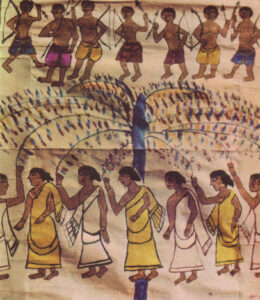
Santhal, are widely scattered among the forests of Bengal, Bihar and Orissa. Santhal paintings, which reflect natural vivacity of the tribal spirit, are geometrical and done by women and their strangeness makes them unusually fascinating. Santhal paints on a white background.
The scrolls stem from an old tradition of aperlaukik chitra ie. Santhal version of Hindu religious legends. The Baghut-Bonga depicted here as tiger god of Santhal while the Dongay is the mixed dancing of the entire village community after hunt in which bow and arrows are used to promote greater fertility of the soil.
Tribal Art - Gond
The tribals of Madhya Bharat are one among the better organized tribes. They are able to use enclosures and whole patterns like circle, square arrangements. They provide in a unique opportunity to see how people unaffected by knowledge from book perceive and relate to the world around them, to people, animals, gods. Demons and elements
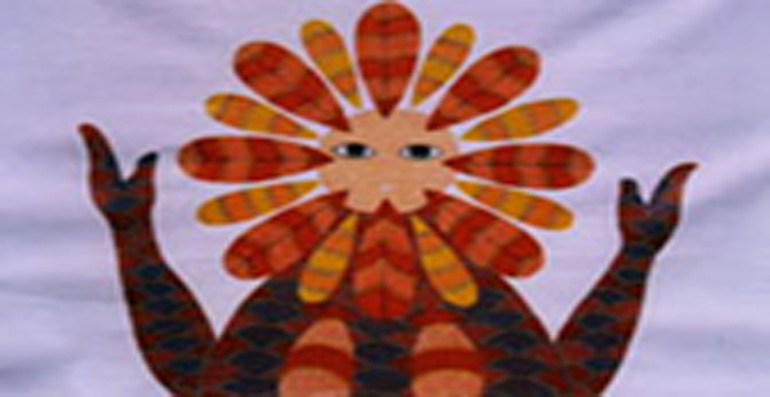
Tribal Art - Gadosa
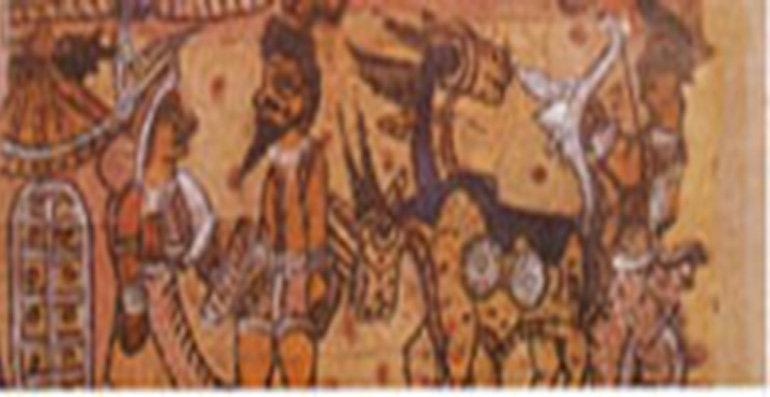
The illustrated scrolls of the Garoda story tellers from Gujarat. Garodas hailed from northern Gujarat and Rajasthan. They used to travel from village to village with their painted paper scrolls and narrated local folklore and popular legends.
Tribal Art of Bhils- (Pithora)
Rathawa’s Pithora paintings are ritual paintings done during rainy season on a house wall in which the image of horse and horse riders are commonly depicted. Wall paintings are made to propitiate the god Pithora on fulfillment of a wish, or seeking fulfilment of a wish. The iconography is prescribed by the rituals myths, and legends from the collective memory of the tribe passed from generation from generation. Section or approval is obtained from the tribe priest, who is in a state of trance becomes god Pithora himself and inspect the purity of the ritual elements and his grammer of the iconography is maintained. He is least interested in aesthetics or stylistic aspect of the paintings.
Among bhils of Rathwa and Saora painting itself is called God. The act of painting is known as reading the god. Their festal movements when man can perform the primordial act of painting following the interpretation of his dream, a tribe man makes a picture. Primary patterns are revealed in dream or in trance. Artistic expression drew substance simultaneously both from music, narration and visual representation of the cosmos. At first place painter, the god himself wrote a pictorial history of the creation. Hence the content of the Rathwa paintings are limited to that description. The object of pictograph is the life in underworld as revealed to priest in dream or trance.

The art of Saoras
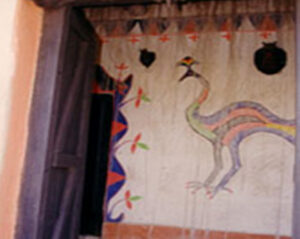
Saoras live in hills of Koraput and Ganjam, built their houses with thick mud walls, which provides a canvas for some remarkable wall paintings. The Saoras work on walls washed with red clay, in paints made of white rice powder on black ash.
They are intended to flatter the Gods, demon and ghosts who might otherwise attack their home.


